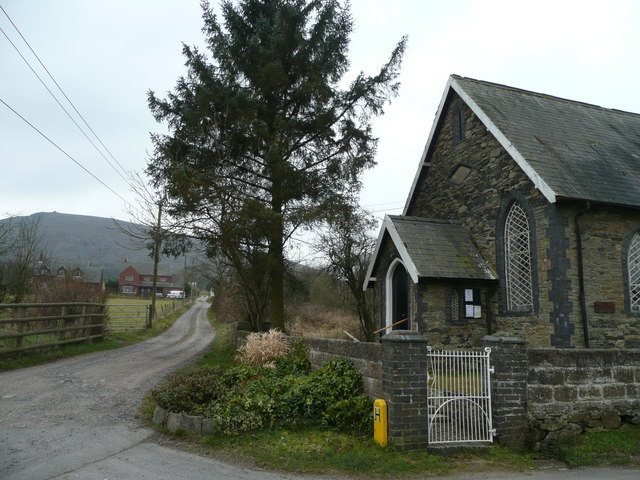Fishpool
Settlement in Montgomeryshire
Wales
Fishpool

Fishpool is a small village located in the county of Montgomeryshire, Wales. Situated in the picturesque Welsh countryside, it is renowned for its tranquil and idyllic setting. The village is nestled amidst rolling hills, with lush green fields and meandering streams that add to its natural charm.
Historically, Fishpool has been an agricultural community, with farming playing a significant role in its economy. The village is dotted with traditional Welsh farmhouses and barns, showcasing the area's rich agricultural heritage. The fertile land surrounding Fishpool supports a variety of crops, including wheat, barley, and potatoes.
The village itself is compact, with a close-knit community that values its rural lifestyle. It features a few quaint cottages, a local pub, and a small village store to cater to the basic needs of its residents. The village pub serves as a gathering place for locals and visitors alike, offering a warm and friendly atmosphere.
Nature lovers are drawn to Fishpool for its natural beauty and abundance of wildlife. The surrounding countryside provides ample opportunities for outdoor activities such as hiking, cycling, and birdwatching. The nearby rivers and lakes are also popular spots for fishing enthusiasts.
Despite its small size, Fishpool enjoys a rich cultural heritage. The village hosts various community events throughout the year, including traditional festivals and agricultural shows, which offer a glimpse into the local customs and traditions.
In summary, Fishpool is a charming and peaceful village in Montgomeryshire, Wales, offering a serene escape from the hustle and bustle of city life. Its natural beauty, agricultural roots, and strong sense of community make it a truly special place to visit or call home.
If you have any feedback on the listing, please let us know in the comments section below.
Fishpool Images
Images are sourced within 2km of 52.557089/-3.005207 or Grid Reference SO3195. Thanks to Geograph Open Source API. All images are credited.




Fishpool is located at Grid Ref: SO3195 (Lat: 52.557089, Lng: -3.005207)
Unitary Authority: Powys
Police Authority: Dyfed Powys
What 3 Words
///beard.warmers.bulge. Near Norbury, Shropshire
Nearby Locations
Related Wikis
Hyssington
Hyssington (Welsh: Isatyn) is a parish in the South-Eastern corner of the historic county of Montgomeryshire in Wales and borders the county of Shropshire...
White Grit
White Grit is a small, scattered village beneath Corndon Hill in Powys, Wales, directly on the border with (and partly in) Shropshire. The nearby village...
Corndon Hill
Corndon Hill (Welsh: Cornatyn) is a hill in Powys, Mid Wales, whose isolated summit rises to 513.6 metres (1,685 ft) above sea level. It has a topographic...
Whetstones (stone circle)
The Whetstones are, or were, a stone circle beneath Corndon Hill in the parish of Church Stoke, Montgomeryshire, Wales, near the border with Shropshire...
Nearby Amenities
Located within 500m of 52.557089,-3.005207Have you been to Fishpool?
Leave your review of Fishpool below (or comments, questions and feedback).















